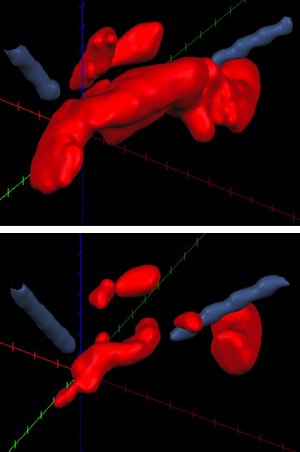Forward stroke
By Lydialyle Gibson
Image courtesy Issam Awad

Despite advances in stroke therapy during the past 15 years—patients now live longer and recover more fully—one type of stroke remains a “dark disease,” says Medical Center neurosurgeon Issam Awad. Hemorrhagic strokes, in which blood vessels burst and leak blood into the brain, make up only 13 percent of strokes but account for half of all stroke-related death and disability. Thirty to 50 percent of those who suffer hemorrhagic strokes die, and those who survive, Awad says, have an 80 percent chance of disability. “For a long time it’s been felt that once you’ve burst the dam, the damage is done,” says Awad, who directs the Medical Center’s neurovascular surgery section.
But he’s helped develop a new therapy that is on the verge of becoming standard practice. He and other researchers found that applying a low dose of blood thinner through a catheter inserted in the brain would break up a clot and let it drain without causing re-bleeding. The process takes about two days; without blood thinner, it takes a clot ten days to two weeks to drain through a catheter—currently the standard treatment. “By then, the damage is extensive.”
Awad first tried the blood-thinner technique 25 years ago after discovering that open-cranial surgery to remove the clot did as much harm as good. Since then he’s done more than 100 of the procedures. He’s also involved in two clinical trials to test the technique: MISTIE, designed to treat intracerebral hemorrhages, and CLEAR, designed for hemorrhagic strokes in which the blood spills into the brain’s ventricles, clogging them. Awad is coprincipal investigator and surgical director for CLEAR, now in its third and final phase. Already, he says, the results show that blood thinner—he uses tissue plasminogen activator, a common drug—improves disability levels and saves lives by 15 to 20 percent. “In fact, we have some perfect outcomes,” patients not only walking and talking but going home to their everyday lives. “With the best available current therapies, you would never expect a patient to be normal after a stroke like this,” Awad says. “Never.”
Return to top
